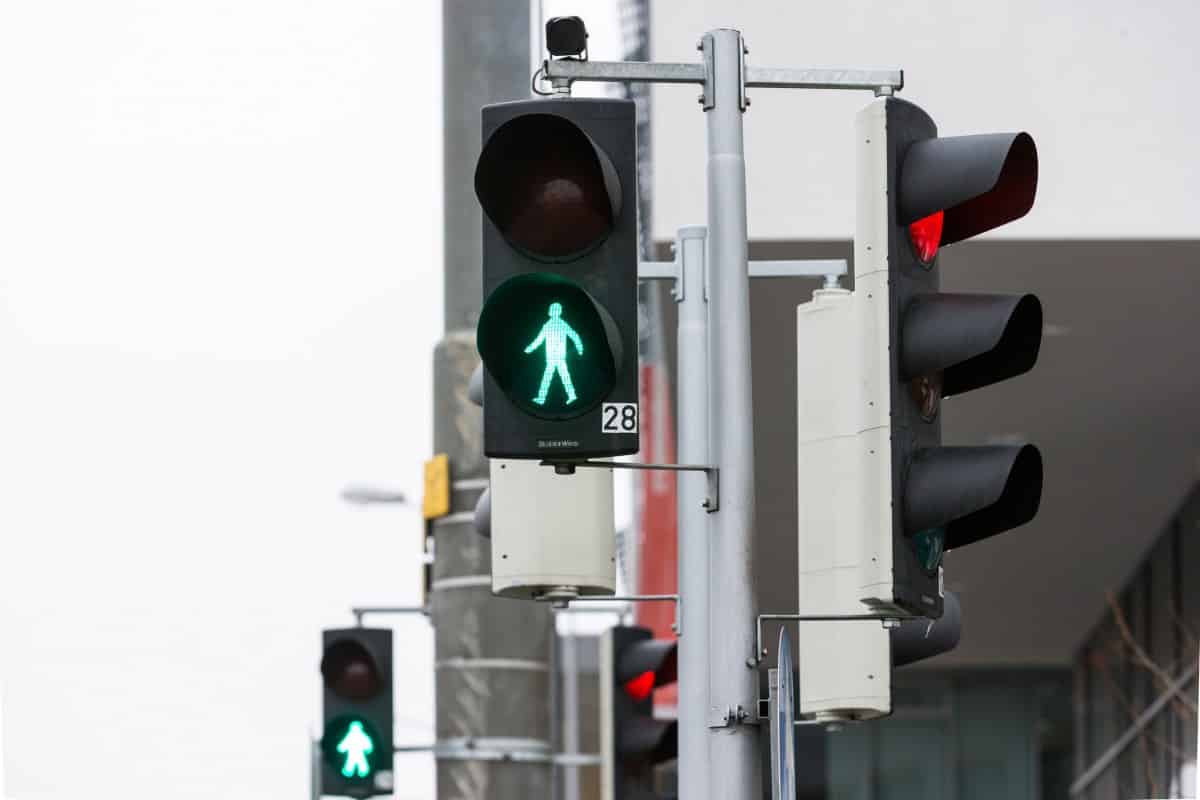
We all recognise it: an unnecessarily long period of red at the traffic lights causes irritation for road users who are in a hurry. With intelligent traffic lights, this will soon be a thing of the past. Built-in cameras detect waiting pedestrians and ensure that the light turns green more quickly. This will work for pedestrians in Vienna by the end of next year.
Two hundred traffic lights in Vienna now have push buttons. This allows pedestrians wishing to cross the street to influence the traffic light phase. If they press the button, the traffic light will know that someone is there and the light will turn green when the crossing is safe. The problem is: impatient pedestrians who push the button, but
- take a crossing before it turns green, or
- walk on and cross somewhere else.
In addition, there are pedestrians who simply press the push-button while passing just for their pleasure. All this immediately leads to unnecessary waiting times for cars.
TU Graz
In order to change this, two years ago, Magistratsabteilung 33 of the City of Vienna commissioned to develop a more intelligent traffic light system. The department is responsible for city lighting, traffic lights, clocks and public Wi-Fi stations. The aim was to develop a traffic system that was as fluid as possible. The project was carried out by researchers from the Institut für Maschinelles Sehen und Darstellen (ICG) of the TU Graz. The research has now been completed and the new traffic light system is entering its pilot phase.
Camera
The ICG of the TU Graz is the only academic Austrian research group that deals with both computer vision and computer graphics. The goal is to make the boundaries between the two areas disappear. The traffic light system developed by the institute works with video images. Pedestrians who intend to cross the road are recognized by a camera. The system then offers three main functions:
- If pedestrians are in the waiting zone, the green phase is started automatically.
- If the pedestrian leaves before the light turns green, the process is interrupted and the cars can continue as usual
- If larger groups – such as school classes – cross the street, the green phase is automatically extended.
Learning algorithms
The camera mounted on the traffic light is smarter and more efficient than the existing standard solutions. All persons within the field of view of eight by five meters are recognized within seconds. “The system takes one second to make an initial estimate and that estimate is reliable after just two seconds,” explains Horst Possegger of the Maschinelles Sehen und Darstellen Institute.
“The system detects pedestrian crossing requirements using learning algorithms. These have been developed by the researchers using global motion models and recorded data.”
Fast response
After two seconds, the system reports the crossing request to the traffic light manager. The controller determines when the traffic light is switched. In the current configuration, the system reports the crossing request three to four seconds before pressing the push button, explains Vossegger.
The system sounds simple. However, the investigation was intensive due to the many requirements, some of which were contradictory. The hardware had to be as small as possible to be integrated into the traffic light control cabinet. At the same time, it had to be large enough for a powerful local computer. Precision and efficiency were top priorities for the software.
In order to keep downtime as short as possible, the program is equipped with a monitoring system that reports faults immediately. “This is double protection. The system is designed to work around the clock, even in harsh conditions, and to cope with voltage peaks”, explains Possegger.
Privacy Protection
Data protection is not compromised by the inclusion of image data, says Possegger. “The image data are necessary in order to be able to recognise all pedestrian characteristics: adults, children, people with umbrellas or prams. However, the images are analysed immediately and do not leave the camera. Only geometric information from which the crossing request can be derived is relevant.”
The new traffic light system should be fully operational by the end of 2020.
Occlusion Geodesics for Online Multi-Object Tracking from Horst P. on Vimeo.
